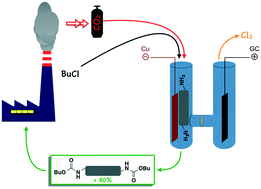Towards a sustainable electrochemical activation for recycling CO2: synthesis of bis-O-alkylcarbamates from aliphatic and benzyl diamines†
Abstract
Carboxylation of aliphatic and benzyl diamines with electrochemically activated CO2 led to the synthesis of bis-O-alkyl carbamates in high yields. Reaction conditions, including the geometry of the electrochemical cell, were discussed and optimized. This resulted in a significant reduction of unwanted material associated with the reaction, overcoming the economic and environmental restrictions to its application on large scale.



 Please wait while we load your content...
Please wait while we load your content...